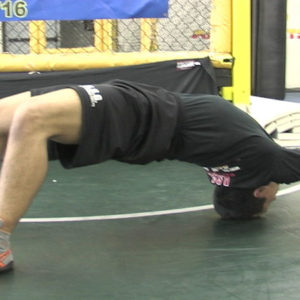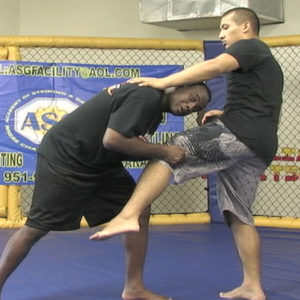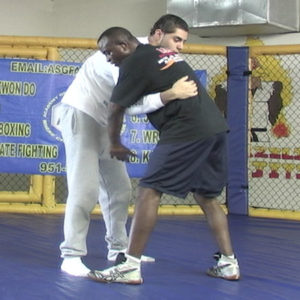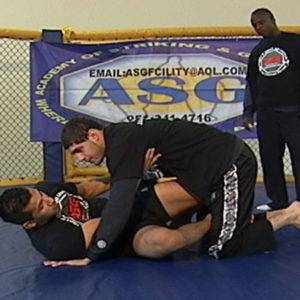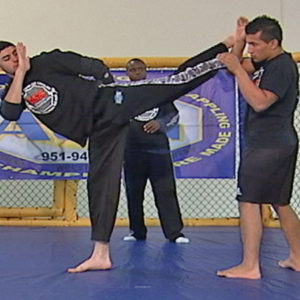Mixed Martial Arts (MMA)
In Ancient Greece, there was a sport called pankration, which featured a combination of grappling and striking skills similar to those found in modern MMA. Pankration was formed by a combination of the already established wrestling and boxing traditions and, in Olympic terms, first featured in the 33rd Olympiad in 648 BC. All strikes and holds were allowed with the exception of biting and gouging, which were banned. The fighters, called pankratiasts, fought until someone could not continue or signaled submission by raising their index finger; there were no rounds. According to E. Norman Gardiner, ‘No branch of athletics was more popular than the pankration. From its origins in Ancient Greece, pankration was later passed on to the Romans.
Later, individual fighters incorporated multiple martial arts into their style. MMA promoters were pressured to adopt additional rules to increase competitors’ safety, to comply with sport regulations and to broaden mainstream acceptance of the sport. Following these changes, the sport has seen increased popularity with a pay-per-view business that rivals boxing and professional wrestling.
MMA (Mixed Martial Arts) was originally promoted as a competition with the intention of finding the most effective martial arts for real unarmed combat situations. Today it is a full contact combat sport that allows a wide variety of fighting techniques and skills, from a mixture of other combat sports, to be used in competitions. The rules allow the use of both striking as well as grappling techniques, both while standing and while on the ground. Such competitions allow fighters of different backgrounds to compete.
The rules for modern mixed martial arts competitions have changed significantly since the early days of vale tudo, Japanese shoot wrestling, and UFC 1, and even more from the historic style of pankration. As the knowledge of fighting techniques spread among fighters and spectators, it became clear that the original minimalist rule systems needed to be amended. The main motivations for these rule changes were the protection of the health of the fighters, the desire to shed the perception of “barbarism and lawlessness”, and to be recognized as a legitimate sport.
Mixed Martial Arts (MMA)
In Ancient Greece, there was a sport called pankration, which featured a combination of grappling and striking skills similar to those found in modern MMA. Pankration was formed by a combination of the already established wrestling and boxing traditions and, in Olympic terms, first featured in the 33rd Olympiad in 648 BC. All strikes and holds were allowed with the exception of biting and gouging, which were banned. The fighters, called pankratiasts, fought until someone could not continue or signaled submission by raising their index finger; there were no rounds. According to E. Norman Gardiner, ‘No branch of athletics was more popular than the pankration. From its origins in Ancient Greece, pankration was later passed on to the Romans.
Later, individual fighters incorporated multiple martial arts into their style. MMA promoters were pressured to adopt additional rules to increase competitors’ safety, to comply with sport regulations and to broaden mainstream acceptance of the sport. Following these changes, the sport has seen increased popularity with a pay-per-view business that rivals boxing and professional wrestling.
MMA (Mixed Martial Arts) was originally promoted as a competition with the intention of finding the most effective martial arts for real unarmed combat situations. Today it is a full contact combat sport that allows a wide variety of fighting techniques and skills, from a mixture of other combat sports, to be used in competitions. The rules allow the use of both striking as well as grappling techniques, both while standing and while on the ground. Such competitions allow fighters of different backgrounds to compete.
The rules for modern mixed martial arts competitions have changed significantly since the early days of vale tudo, Japanese shoot wrestling, and UFC 1, and even more from the historic style of pankration. As the knowledge of fighting techniques spread among fighters and spectators, it became clear that the original minimalist rule systems needed to be amended. The main motivations for these rule changes were the protection of the health of the fighters, the desire to shed the perception of “barbarism and lawlessness”, and to be recognized as a legitimate sport.
How Champions Are Made
By Karl Glover
Throughout this series, USC wrestling coach and former Olympian Karl Glover discusses and teaches various techniques and their advantages and disadvantages of multiple martial arts and their application in MMA. Covered in depth are common Wrestling and Jiu-Jitsu techniques as applied to MMA along with the counter technique(s). Muay Thai, Boxing, and conditioning are also briefly covered and are intended for the beginning level introduction of these arts. This series is presented from the combat sports perspective and ranges from beginner level to advanced – depending on the art. Also featured throughout the series are Sergio Guerrero, IFS Muay Thai champion and UFC Lightweight Jason Gonzales and Antonio Sanchez.
School/Dojo: Academy of Striking & Grappling (ASG)
Disciplines: MMA/Wrestling
Location: Moreno Valley, CA
Competitive Experience
1976, 1977, 1978 – California USA Wrestling Freestyle State Champion
1977- USA Wrestling Junior freestyle all American 105.5 National finalist (forum.thecaliforniawrestler.com)
1978 – California Community College Championships: 118lb Rio Hondo College 1st place (cccaasports.org)
1979 – California Community College Championships (riohondowrestling.com)
118-lbs 1st place state
118-lbs 1st place regionals
1980-1981 Wrestler for Louisiana State University
1982 – Cal State Bakersfield record 26-4, 8 pins (gorunners.com)
1982 -All American Freestyle Open National 5th place
1982-1985- Sunkist Wrestling Team Member
1986-1990 Foxcatcher Team Member
1987 – Tbilisi, Russia National Team Member
1988 – Olympic alternate
Coaching Experience:
High School: 4X CIF Champions, CIF State Runner Up Canyon Springs HS Moreno Valley, CA
Kennedy High School, La Palma CA Rancho Verde High School Moreno Valley, CA
College: East LA College
Rio Hondo
Santa Ana College
USC Wrestling
USA Wrestling National Coach
USA Wrestling International Coach
USA Boxing Coach








